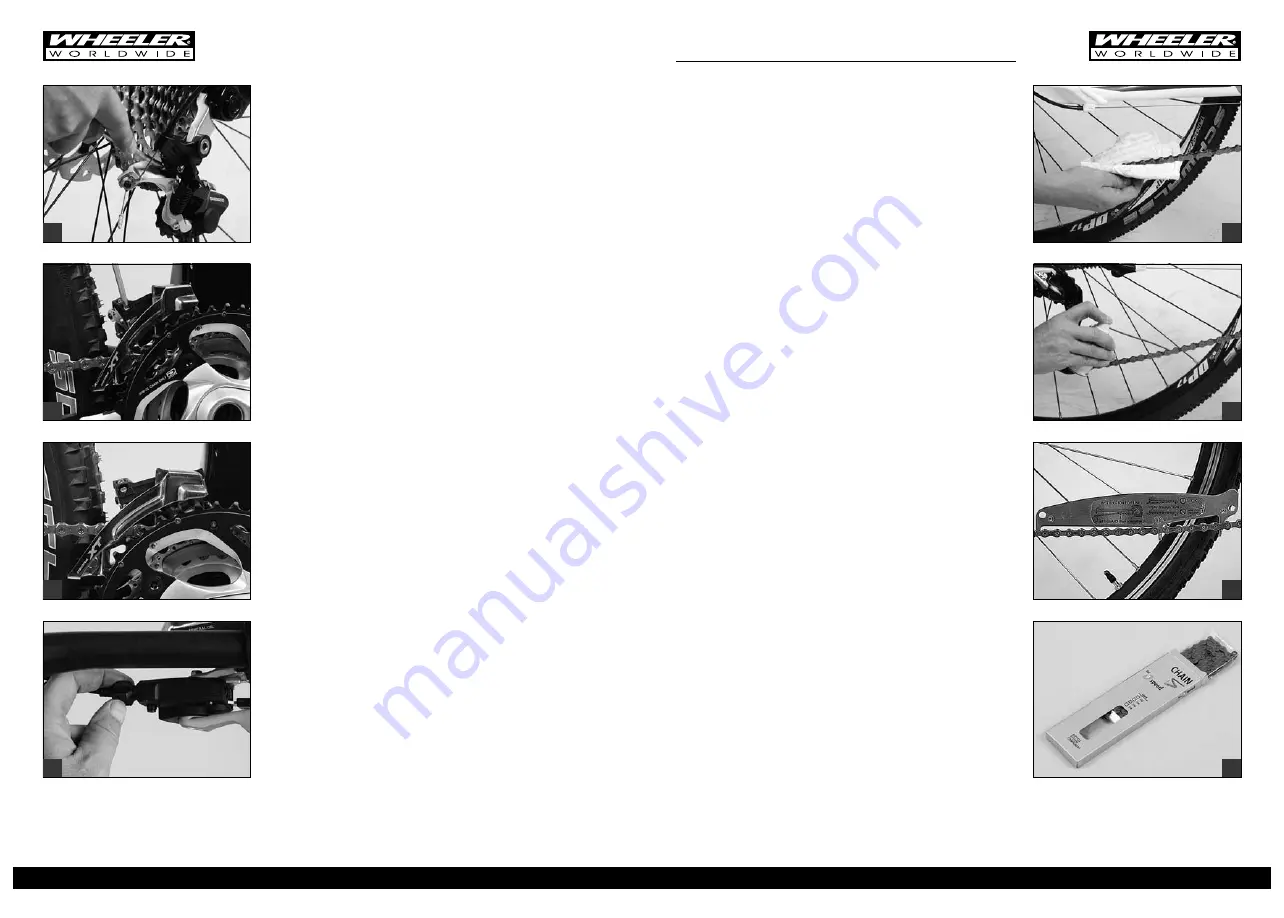
63
This adjustment prevents the chain from getting stuck between sprock-
et and spokes or the rear derailleur or the derailleur cage from touch-
ing the spokes, which could result in damage to the spokes, the rear
derailleur and the frame. In the worst case, it could be impossible to
continue cycling.
A
If your WHEELER bicycle has tipped over or the rear derail-
leur received a blow, the rear derailleur or its mount, also
referred to as the derailleur hanger, might be bent. It is ad-
visable to check its range of movement and readjust the
limit screws
(a)
, if necessary, after such an incident or after
mounting a new rear wheel on your bicycle.
A
Do a test ride in a place free of traffic, after adjusting the
gears of your bicycle.
I
Let your WHEELER bicycle dealer maintain and service your
WHEELER bicycle regularly.
Adjusting the Front Derailleur
The range within which the front derailleur
keeps the chain on the
chainring without itself touching the chain is very small. The movement
range is reduced in the same way as with the rear derailleur, i.e. by
turning the limit screws
(b)
marked “H“ and “L“. The limit screws are
adjusted by your WHEELER bicycle dealer. They do not alter their posi-
tion during normal use.
As with the rear derailleur, the cable of the front derailleur
(c)
is subject
to lengthening which leads to a reduced precision in gear changing. If
necessary, shift to the small chainring and increase the tension of the
Bowden cable by turning the adjusting bolt through which it passes at
the entry to the gear shifter
(d)
.
G
Always check after an accident whether the guide plates of
the front derailleur are still parallel to the chainrings. Make
sure they do not touch the large chainring which would
block the drive.
risk of accidents!
G
Adjusting the front derailleur is a very delicate job. Improper
adjustment can cause the chain to jump off, thus interrupt-
ing the power train.
this can cause an accident!
A
It is essential to make a test ride in a place free of traffic,
after adjusting the gears of your bicycle.
chain – care and wear
Regular and correct lubrication of your bicycle’s chain makes for enjoy-
able riding and prolongs its service life. It is not the quantity, but the
distribution and regular application of lubricant that counts. Clean the
dirt and oil off your chain with an oily rag
(e)
from time to time. Special
degreasers are not necessary; they even have a damaging effect.
Having cleaned the chain as thoroughly as possible, apply chain oil,
wax or grease
(f)
to the chain links. To lubricate the chain, drip the
lubricant onto the rollers of the lower run of the chain while you turn
the crank. Once this is done, turn the cranks a few more times; then let
the WHEELER bicycle rest for a few minutes so that the lubricant can
penetrate into the chain. Finally wipe off excess lubricant with a rag so
that it does not spatter around during riding or can collect road dirt.
G
Make sure the braking surfaces of the rims, the rotors and
the brake pads remain clear of lubricants, as the brakes will
fail otherwise!
I
For the sake of the environment, only use biodegradable
lubricants. Bear in mind that some of the lubricant can end
up on the ground, especially in wet conditions.
Although the chain is one of the wearing parts of the bicycle, there are
still ways for you to prolong its life. Make sure the chain is lubricated
regularly, especially after riding in the rain. Try to only use gears which
run the chain in the straightest line between the sprockets and chain-
rings and get in the habit of high cadence pedalling.
The chains of bicycles with derailleur gears are worn out after approx.
800 to 2,500 km (500 to 1,550 miles) or 40 to 125 hours of use. Heav-
ily stretched chains impair the operation of derailleur gears. Cycling
with a worn-out chain also accelerates the wear of the sprockets and
chainrings. Replacing these components is relatively expensive com-
pared with the costs of a new chain. It is therefore advisable to check
the condition of the chain at regular intervals.
Your WHEELER bicycle dealer has accurate measuring instruments to
check the chain wear
(g)
. Replacing the chain should ideally be left to
an expert, as this requires special tools. In addition, you need to select
a chain matching your gear system.
G
An improperly joined or heavily worn chain can break and
cause an accident.
I
When replacing your chain, only use appropriate and suit-
able original spare parts
(h)
. Your WHEELER bicycle dealer
will be pleased to help you.
a
b
c
d
62
e
f
g
h
Summary of Contents for Cross
Page 70: ......
















































